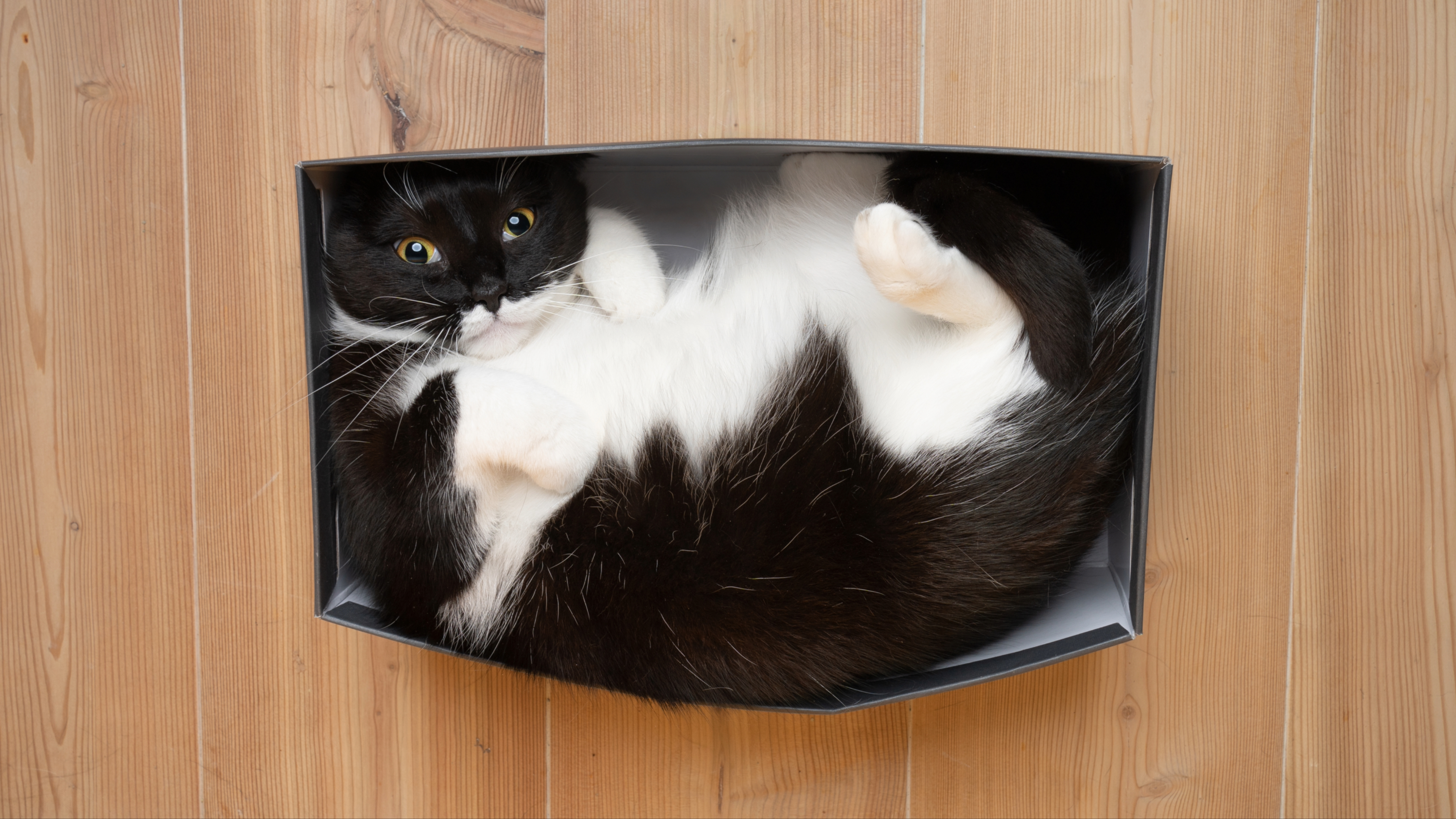Study reveals how cats manage to squeeze themselves into small spaces (and the reason is fascinating!)
Cats really are liquid! Well, kind of…

We often joke that cats are liquid for their abilities to fit into the tiniest spaces, and now scientists have confirmed that this is because cats are unusually aware of their body shape and size.
If you’re a cat parent yourself, you’ll no doubt be familiar with times your kitty seems to pop up out of nowhere expecting one or two of the best cat treats, or times your cat has decided that the tiny cardboard box you were planning to throw out would make a great bed.
While we know that a number of animals can make decisions about the likelihood of them passing through spaces based on knowledge of their size and space, a new study marks the first time researchers have looked at how a cat’s self-awareness can help them fit into spaces, according to animal behavior scientist Dr. Péter Pongrácz from Eötvös Loránd University in Budapest, Hungary.
Dr. Pongrácz looked at how 30 cats fit into gradually decreasing openings with either the same height or the same width in a similar study to one recently carried out with dogs. “While dogs slowed down and hesitated before they attempted to use an uncomfortably small opening,” he said, “In the case of cats we did not detect this change in their behavior before their attempt to go through even the narrowest openings.”
When cats jumped over the openings, it was taken as their refusal to use the opening. Meanwhile, they would slow down before they passed through the shortest narrow openings, and seemed to assess their own anatomy – or used trial-and-error.
And when the openings became shorter than the cats’ height at their withers – the ridge between the shoulder blades – they would hesitate. “This indicates that for cats, the vertical and horizontal dimensions of an aperture represent different importance,” Dr. Pongrácz continued. “Cats are almost liquid! Cats selectively rely on body size awareness when negotiating short openings.”
It’s worth noting, too, that because the experiment was carried out at each cat’s home, any hesitation is unlikely to be because they’re unsure what’s on the other side of the opening – they’re in very familiar settings to them.
Get the best advice, tips and top tech for your beloved Pets
The research challenges the idea that cats slow down to use their whiskers to assess the suitability of more narrow openings, while Dr. Pongrácz aims to explore whether cats rely on other forms of body awareness, like their weight, in similar tasks in future research.
When cats seek out the tiniest, most cozy areas and somehow fit in, it can provide us with so much entertainment. For more things we just love about our felines, here are 32 funny things cats do.

Adam is a freelance journalist specialising in pets, music and culture, and mental health and wellbeing. He investigates and writes the large majority of news on PetsRadar, and collaborates with veterinary experts to produce informative pet care content.
Adam has a journalism degree from Southampton Solent University and a masters degree in Magazine Journalism from Cardiff University. He was previously senior editor at dog advice website DogTime.com, and has also written for The Independent, GoodToKnow and Healthline.
He owns two rescue cats, Bunny and Dougie, and has also previously had a rabbit, fish and Roborovski dwarf hamsters.
